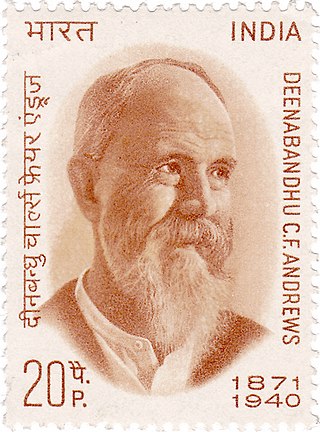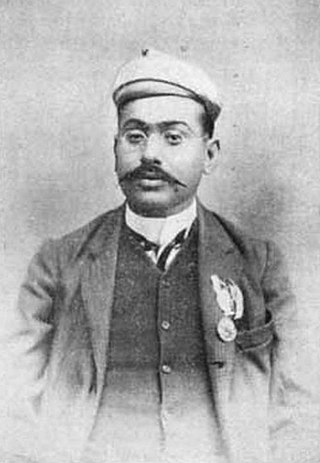Indo-Guyanese or Indian-Guyanese, are Guyanese nationals of Indian origin who trace their ancestry to India and the wider subcontinent. They are the descendants of indentured servants and settlers who migrated from India beginning in 1838, and continuing during the British Raj.
Navsari is the ninth biggest city in the state of Gujarat in India. It is the administrative headquarters of Navsari District. Navsari is situated between Surat & Mumbai. Navsari is a twin city of Surat. It is located 37 km south of Surat. As per 2011 Census of India, Navsari is 16th biggest city of Gujarat state. It ranked 10th most populous city of Gujarat in 1991 Census of India and 2001 Census of India. Navsari is the 25th cleanest city of India according to the Swachh Bharat Urban mission. Dandi village near Navsari was the focal point of the great Salt March led by Mahatma Gandhi during civil disobedience movement of India.

Valsad district is one of the 33 districts in the Western Indian state of Gujarat. It is bound by Navsari district to the north, Nashik district of Maharashtra state to the east, and Dadra and Nagar Haveli district of the Dadra and Nagar Haveli and Daman and Diu (DNHDD) union territory and the Palghar district of Maharashtra to the south. The Arabian Sea lies west of the district. The coastal Damaon enclave of DNHDD is bounded by Valsad district on the north, east, and south. The district's administrative capital is Valsad. The district's largest city is Vapi.

Charles Freer Andrews was an Anglican priest and Christian missionary, educator and social reformer, and an activist for Indian independence. He became a close friend of Rabindranath Tagore and Mahatma Gandhi and identified with the Indian liberation struggle. He was instrumental in convincing Gandhi to return to India from South Africa, where Gandhi had been a leading light in the Indian civil rights struggle.
Indo-Mauritians are Mauritians who trace their ethnic ancestry to the Republic of India or other parts of the Indian subcontinent in South Asia.
The Indian Imperial Association of Fiji (I.I.A.) was active in Fiji during the last years of the indenture system, safeguarding the interests of and assisting in the improvement of the Indian community.

Manilal Maganlal Doctor was a British Indian barrister and politician, who travelled to numerous countries of the British Empire, including Fiji, Mauritius and Aden, providing legal assistance to the local ethnic Indian population. He met Gandhi, who asked him to go to Mauritius, where he represented Indo-Mauritians in court and edited a newspaper, The Hindustani. Gandhi later informed him of the need for a barrister in Fiji and he arrived in Fiji in 1912. In Fiji he also represented Indo-Fijians in court, started a newspaper, Indian Settler and established an organisation for Fiji Indians, known as the Indian Imperial Association. In 1916 when he was by-passed for nomination to the Legislative Council of Fiji, his relationship with the Government of Fiji deteriorated. The Government accused him of the violence and sabotage of the 1920 strike and deported him. He was barred from practicing law in several British colonies. He later managed to practice law in Aden, Somalia and Bihar State in India but spent his final days in Bombay.

Totaram Sanadhya (1876–1947) was deceitfully recruited as an indentured labourer from India and brought to Fiji in 1893. He spent five years working as a bonded labourer but was never afraid to fight for his rights. After completing his indenture he established himself as a small farmer and a Hindu priest but spent most of his time trying to assist the less fortunate still under the bondage of indenture. He sought the help of Indian freedom fighters and missionaries and encouraged the migration to Fiji of Indian teachers and lawyers who, he believed, could improve the plight of Indians in Fiji. After living in Fiji for twenty-one years, he returned to India, in 1914, and wrote about his experience in the book, "My Twenty-One Years in the Fiji Islands" (Hindi). This book was used as the main source of information in the campaign to end the Indian indenture system.

Fiji Hindi is an Indo-Aryan language spoken by Indo-Fijians. It is an Eastern Hindi and Bihari language, considered to be a koiné language based on Awadhi that has also been subject to considerable influence by Bhojpuri, other Eastern Hindi and Bihari dialects, and Standard Hindi-Urdu. It has also borrowed some vocabulary from English, Fijian, Telugu, Tamil, Bengali, Punjabi, Gujarati, and Malayalam. Many words unique to Fiji Hindi have been created to cater for the new environment that Indo-Fijians now live in. First-generation Indians in Fiji, who used the language as a lingua franca in Fiji, referred to it as Fiji Baat, "Fiji talk". It is closely related to Caribbean Hindustani and the Bhojpuri-Hindustani spoken in Mauritius and South Africa. It is largely mutually intelligible with the languages of Awadhi and Bhojpuri, as well as with the Bihari languages of Bihar, Uttar Pradesh, Jharkhand, Madhesh, Koshi and Lumbini, and the dialects of Eastern Hindi of Uttar Pradesh, Madhya Pradesh, Chhattisgarh and Lumbini, but differs in phonetics and vocabulary with Modern Standard Hindi and Urdu.
The Gujarati people, or Gujaratis, are an Indian ethnolinguistic group who reside in or can trace their ancestry or heritage to a region of the Indian subcontinent primarily centered in the present-day western Indian state of Gujarat. They primarily speak Gujarati, an Indian language. While Gujaratis mainly inhabit Gujarat, they have a diaspora worldwide. Gujaratis in India and the diaspora are prominent entrepreneurs and industrialists and maintain high social capital. Many notable independence activists were Gujarati, including Mahatma Gandhi, Muhammad Ali Jinnah and Vallabhbhai Patel.

The Arya Samaj was the first religious, cultural and educational Fiji Indian organisation established in Fiji. From its inception, in 1904, it attracted the young, educated and progressive Hindus into its fold. During the first three decades of the twentieth century, it was the sole voice of the Indian community in Fiji and as Fiji Indians won political rights, it was not surprising that first Indian members of the Legislative Council were all Arya Samajis. The influence of Arya Samaj over the Indians in Fiji gradually waned as other organisations representing Indians were established but it remained the dominant force in politics until 1959. The modern day Arya Samaj in Fiji still speaks out on issues affecting its members and its activities are visible through the numerous educational institutions that it manages.
The Indians in Fiji are mainly descendants of the 15,132 contract labourers who were brought to Fiji between 1903 and 1916. This represents about 25% out of a total of 60,965 contract labourers who were brought to Fiji between 1879 and 1916. They were forced in to ships from Madras and were mainly recruited in the districts of North Arcot, Madras, Krishna, Godavari, Visakhapatnam, Tanjore, Malabar and Coimbatore. More than half of the labourers from South India were recruited from North Arcot and Madras, but most of those recruited in Madras were originally from North Arcot and Chingleput.
Shivabhai Bhailalbhai Patel, commonly known as S.B. Patel, was a London trained barrister, who arrived in Fiji, from India, on 24 December 1927. He was a man of calm and philosophical nature and had considerable influence on Fiji politics, always working behind the scenes. Even the Government of Fiji used him as a channel of communication with Fiji Indian leadership.
For other ships with a similar name, see HMS Jumna.
Babu Ram Singh was a Fiji Indian who had come to Fiji under the indenture system and was one of the few people who, after indenture, prospered and made an attempt to help his less fortunate ex-indentured brethren. Babu Ram Singhs surviving Business, Fiji Rubber Stamp Co Ltd is still under operation in Mark Street, Suva, and is looked after by his children.
Girmitiyas, also known as Jahajis, were indentured labourers from British India transported to work on plantations in Fiji, South Africa, Eastern Africa, Malaysia, Singapore, and the Caribbean as part of the Indian indenture system.
Unlike the majority of Fiji's Indian population, who are descendants of Indian indentured labourers brought to Fiji between 1879 and 1916, most of the Sikhs came to Fiji as free immigrants. Most Sikhs established themselves as farmers. Sikhs also came to Fiji as policemen, teachers and preachers. In recent years large numbers of Sikhs have emigrated from Fiji, especially to the United States, Canada, the United Kingdom, Australia and New Zealand. Sikhs in Fiji are generally referred to as Punjabis. Total population of sikhs in Fiji is around 3600.
This is a synopsis of organisations formed by Indians in Fiji. When they became free from the bondage of indenture and were able to organise themselves, they founded numerous organizations to seek social and political justice. These organisations promoted the teaching of Indian languages and religious practices and also to help others in time of need. Some of the successful organisations are listed below in the order in which they were established. Some, such as the National Federation Party, are no longer exclusively Indian, but are still predominantly so.

Fiji has three official languages under the 1997 constitution : English, Fijian and Fiji Hindi. The Fijian language is spoken as the first language by most indigenous Fijians who make up around 54% of the population.
Indo-Fijians, also known as Indian Fijians, are Fijian citizens of South Asian descent, and include people who trace their ancestry to various regions of the Indian subcontinent. Although Indo-Fijians constituted a majority of Fiji's population from 1956 through the late 1980s, discrimination and the resulting brain drain resulted in them numbering 313,798 (37.6%) out of a total of 827,900 people living in Fiji as of 2007.






